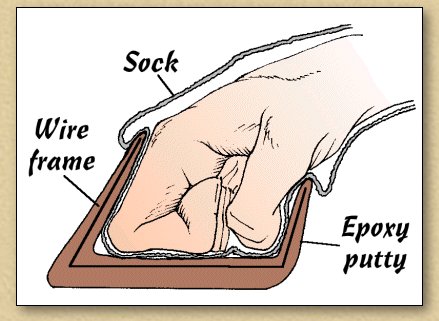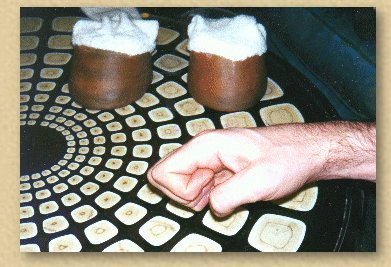
|
Return to Main Menu |
|
Research
The first thing we'll need to know is what does a horse's hoof look like? The intention of this design is to make something half-way realistic. Fortunately the internet has grown into an immensely powerful research tool, and a search for HORSE HOOF and restricting the search to image-results should yield the results you want. Of course, the best option would be to go and look at a real horse. If you're lucky enough to know someone who owns a horse, you're all set. If not, look up your local riding stable. If you explain that you've been assigned an art project and you need to model a realistic hoof, then we've satisfied honesty without going to far into explanations! If you're approaching a riding school, bear in mind that they are usually busy places operating on a very tight budget. It's only polite to offer them something for their time and effort - say the price of a half-hour lesson? (You could even ride!) Photo or sketch the hoof from the front and side, but especially from underneath and behind. If you're new to horses, make sure someone experienced is holding the hoof for you. Horses are fairly tolerant creatures, but they're evolved to take flight at any sudden movement or sound that might signify a predator. Talk softly as you work so he knows where you are, and don't make any sudden moves or loud noises. Don't walk behind the horse unless you really know what you're doing and know the horse well. The General Idea The design is very simple: we're out to make a solid "glove" into which your clenched fist will fit, as shown in Fig.1. To disguise the join at the coronet, I used a sock, glued to the rim as shown, which adds a more realistic shape and texture too. The hoof itself is made from modelling putty formed over an armature of steel wire - don't worry: there's nothing very technical about this procedure!  Fig 1. With an idea of the appearance you are looking for, the next question is one of size. There are three points to address:
 Fig 2. The critical measurements you'll need to take in this position are the width of your fist across the knuckles (the widest point of your hand in this position), and the length of your longest finger from the top of the knuckle to the lowest point of the first joint: this helps govern the height of the hoof. A word of warning: don't assume your hands are identical! Get some rough paper, lay it flat on a surface, and place your fist upon it, imagining it to be a hoof. Take a pen and roughly outline the base of your fist on the paper. Don't worry about being too accurate, but aim to err on the generous side. Now, keeping you hand in its hoof shape, lay it on its side, and trace that outline too. These two outlines will form the inner dimensions of your hooves: the size of the cavity that accepts your fingers. What you must do now is draw the outer surface, based on your knowledge of hoof shape around these outlines. The thicker the wall, the stronger the hoof will be, but also the heavier. Try to aim for a minimum of a centimetre or half an inch and remember a wire frame will be hidden within it. |

|
Back |

|
Next |